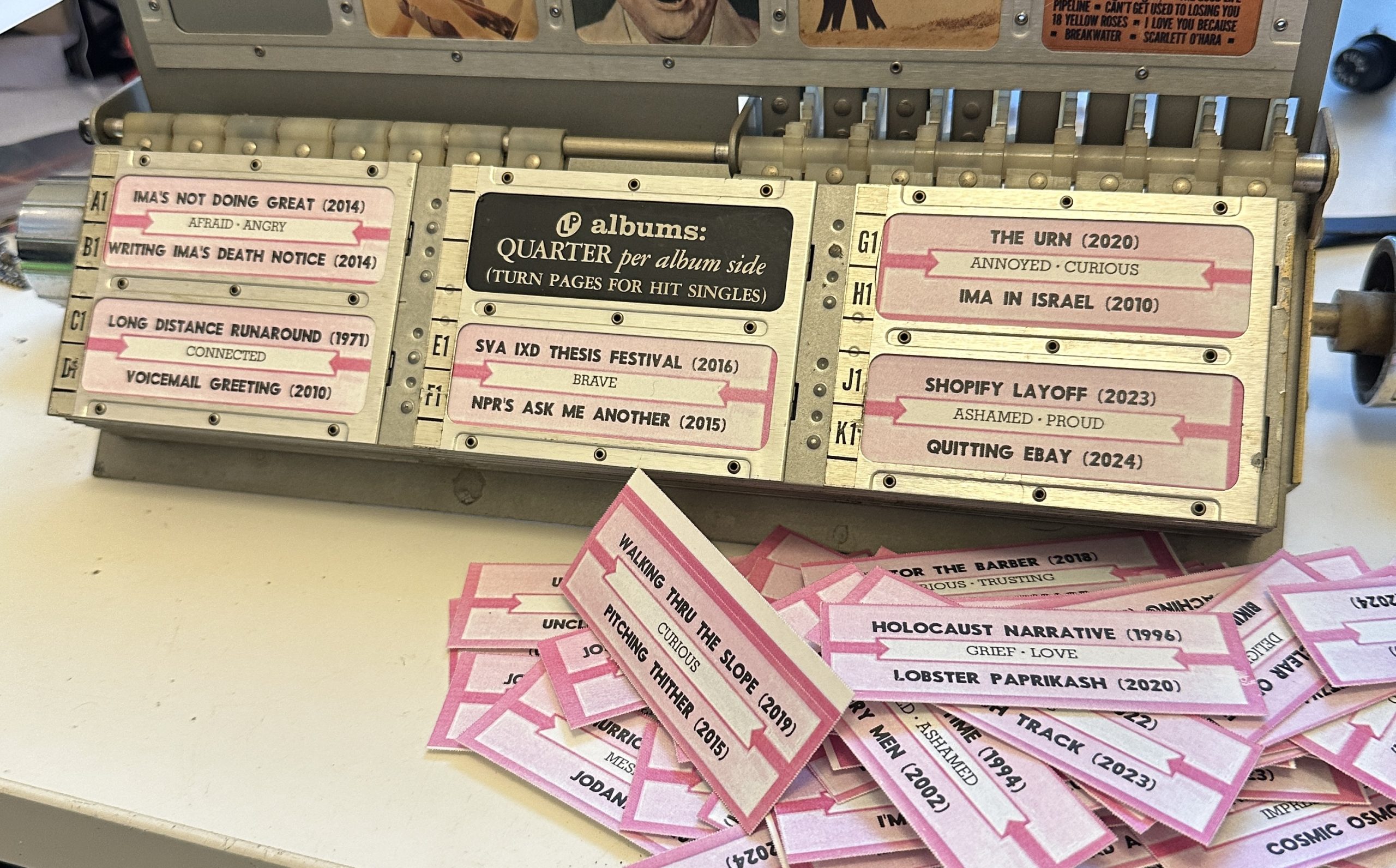B Sides & Rarities
I like a good backstory. No — I mean, I really like a good backstory. Just check my lonely little corner of the alignment chart I filled out with my students last week:
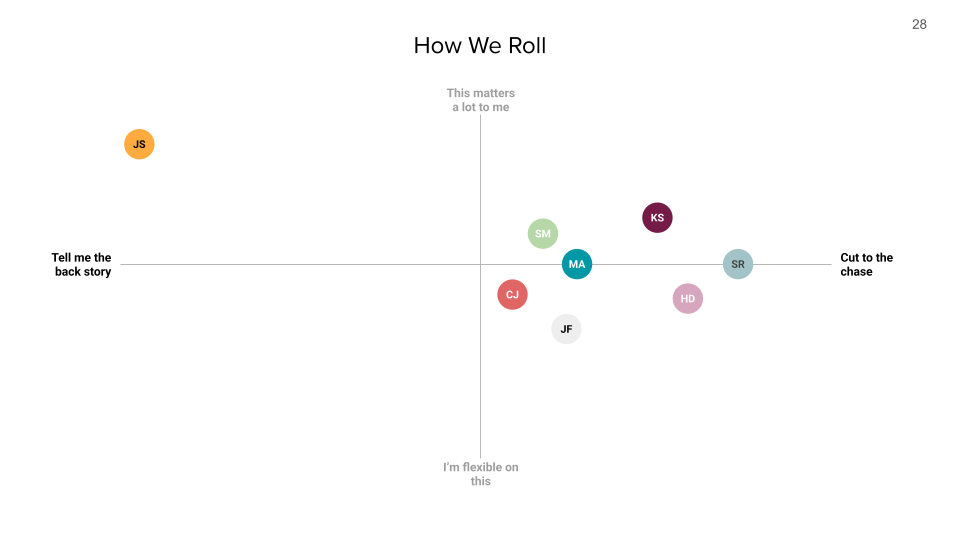
I also have felt more dissociated than usual lately, in the lead-up to my 40th birthday (which is probably why I celebrated it last week by taking myself to a desert island). There’s no sugarcoating it. I have a ton to be grateful for, and I wouldn’t want to relive any of my younger years, but this moment has left me unusually tender. There are a lot of big life vectors that haven’t taken quite the shape I expected them to, and I’ve been dealing with it by floating around the nadir of the Kübler-Ross grief cycle. (There’s a lot of nostalgia in the ‘bargaining’ phase. Who knew?)
So I’ve spent the past few weeks on a project that’s left me awash in just about every uncomfortable emotion I have access to. It’s a collection of memories, in audio form. A tool for facing, dealing with, processing, and re-encoding memories — both the challenging ones and the softer ones.
I’ve harvested all manner of ephemeral audio recordings from my forty years, and put them into a vintage 1960s Seeburg SC1 Consolette wallbox, which I’m calling the Juke Vox. This unit contains 160 separate tracks — each one a bit of highly intimate, personal audio.
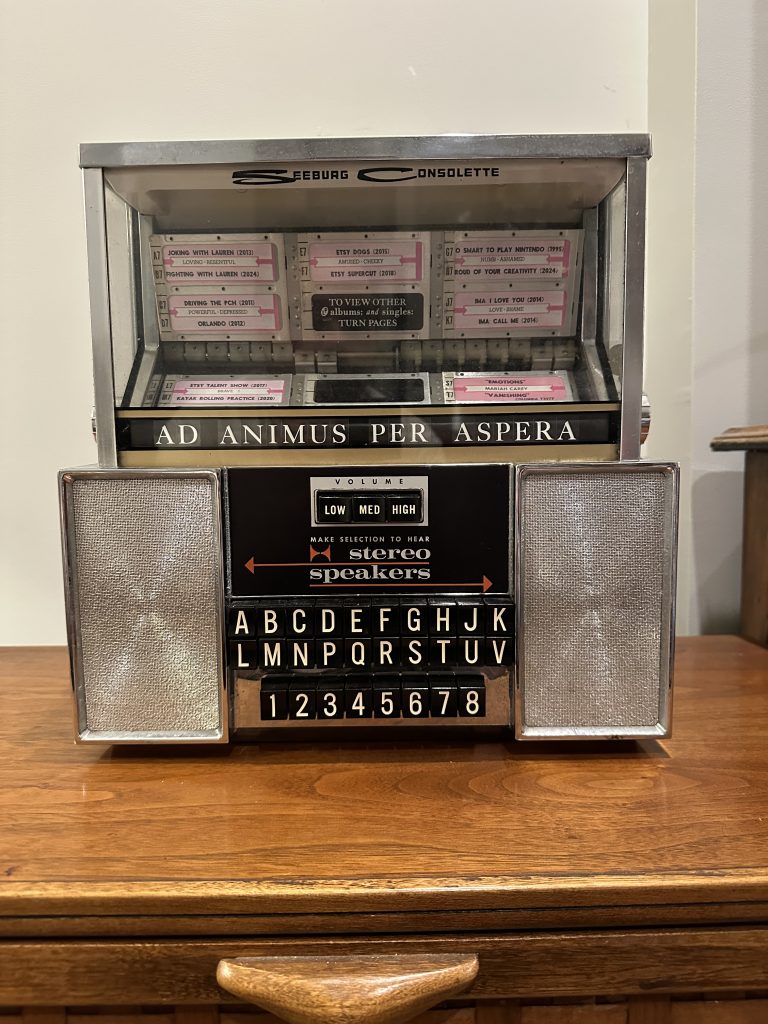
The Juke Vox contains, among many other things:
- the story of how my parents met
- voicemails from my grandmother, who died in 2014
- Fisher-Price cassette recordings of me as a toddler
- The soundboard I made for Suite 2412
- a voicemail from a friend on my 30th birthday, in which she references my ambitious goal of extending that day as long as possible (by, like, taking advantage of the fact that a moment can either go by in an instant or feel like it takes forever) [yep, i’ve always been like this]
- dashcam audio of a particularly bad fight with my partner
- my bar mitzvah haftorah
- ambient sounds from many corners of this country, such as Dead Horse Bay (in the Rockaways), the pene-exclave Point Roberts, WA, and my first drive down the Pacific Coast Highway on my birthday in 2011
- 17.4KHz, a frequency I’m now too old to hear
- my family ideating names for my niece, in the hospital, on the day she was born
- home movies from my childhood that dredged up long-forgotten feelings and soured my relationship with my parents for years
- TV commercials from the early 90s that make me feel safe
- the episode of NPR’s Ask Me Another that I won on the eve of my 30th birthday
- songs that my good friends associate with me
- songs that trigger a strong emotional response for me
- songs I’ve sung, and songs others have written for or sung for me
- that one humiliating time during my high school production of 12 Angry Men in which I forgot my line and the production came to a screeching halt, a memory that would flash in my brain and cause me deep burning shame for like the next 5 years
- etc
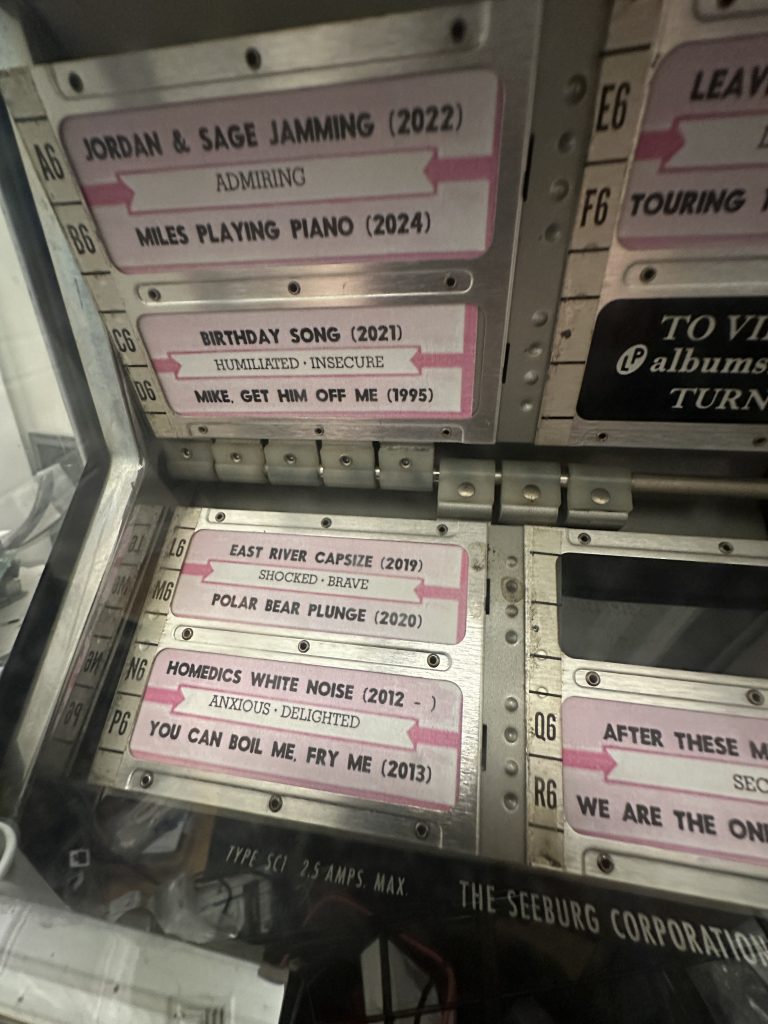
Some of these recordings are just a few seconds long; others are several hours long. I harvested them from many, many sources, across decades of backups: stray MP3s found in old e-mail inboxes; digitized VHS tapes and cassettes, voice memos I surreptitiously recorded* over the years; iMessage voice memos others sent me; old iPhone videos; the occasional YouTube rip.
I’ll note that I did keep one selection that came with the jukebox originally: Mariah Carey’s “Emotions” and “Vanishing.” It just felt right.
Each selection is labeled with an emotion it evokes for me. In some cases I can access my emotional response at the time; in other cases, it’s my emotional response re-living the recording. I really struggle to identify my feelings — or even to know that I’m having any in the moment. So this was a challenging exercise. I triangulated a couple of different feelings inventories to help me get there.
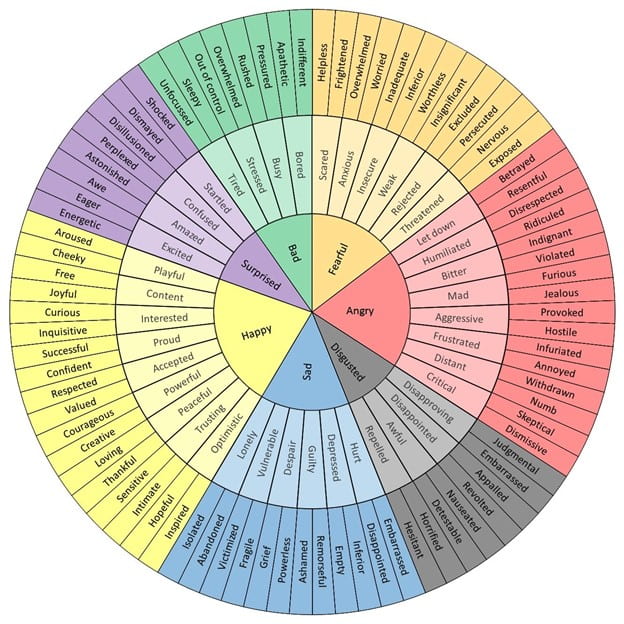
The motto on the front of the box reads “Ad animus per aspera” — a gentle nod to NASA’s motto — which came to me suddenly and awoke me from a nap the other day. I figure it means something like ‘to the soul, through adversity.’ (It’s a hapax legomenon, too!) The lettering kit came from Midwest Ephemera, which makes loving restorations for a range of jukebox models.
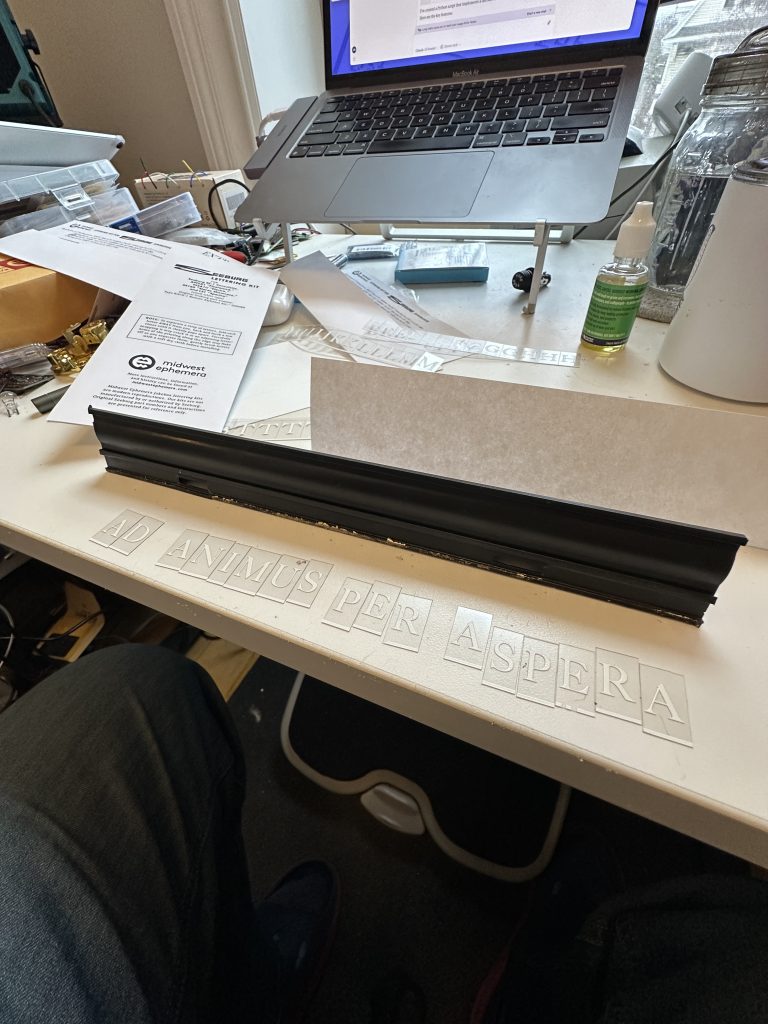
Now, let’s talk about the jukebox itself. The SC1 is a true wonder. It’s built like a tank! It’s an extremely hardy, extremely analog device that I’m terrified of. It weighs like 50lbs.
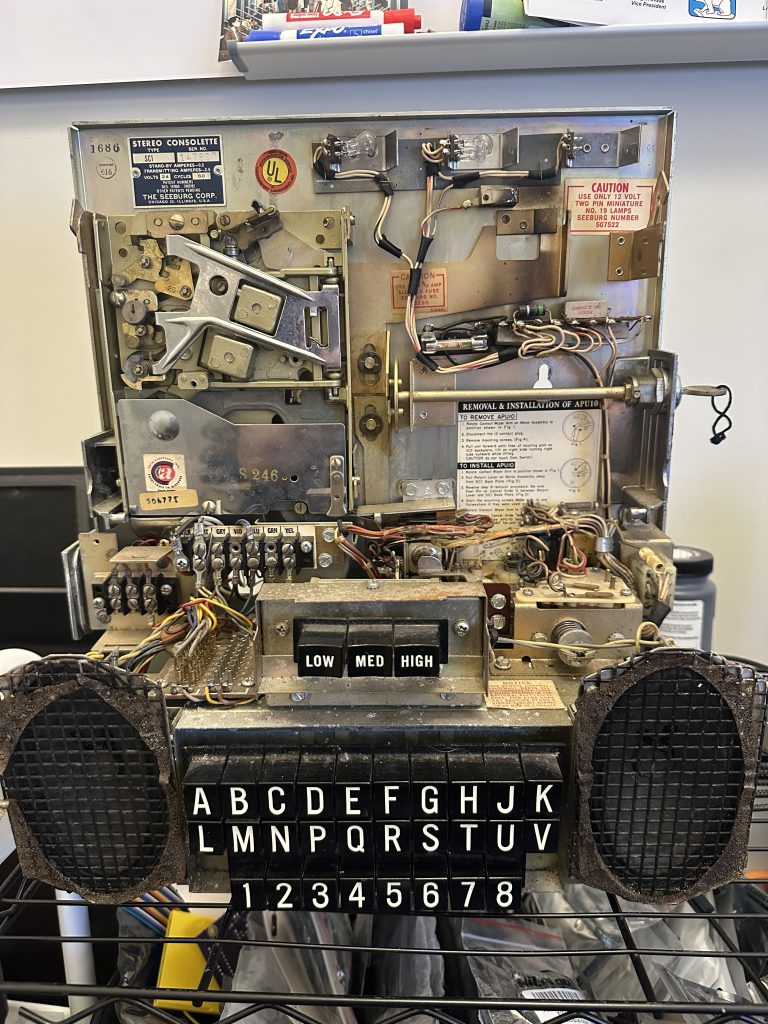
Most of the vintage tech I work on comes from the 80s or 90s — since they tend to be devices I encountered (or coveted) in my youth. This is a different beast. The SC1 is from an era well before the microchip. It’s an extremely simple, extremely elegant device, which is best understood as a glorified remote control for a much bigger jukebox. The SC1 (technically a ‘wallbox’) would be mounted to your diner booth, where it would allow you to interface with the big jukebox elsewhere in the diner that actually contained all the 45s you could play. The wallbox’s job was to take your money, give you a number of credits based on what coin you dropped in, then telegraph your selection to the big jukebox and route the resulting audio back in.
It does its job exceptionally well — the unit I secured is in terrific shape. But considering its simplicity, reverse-engineering it has been a wicked challenge. Just look at the 24vac-powered mechanism that sends analog pulses as it processes a selection!
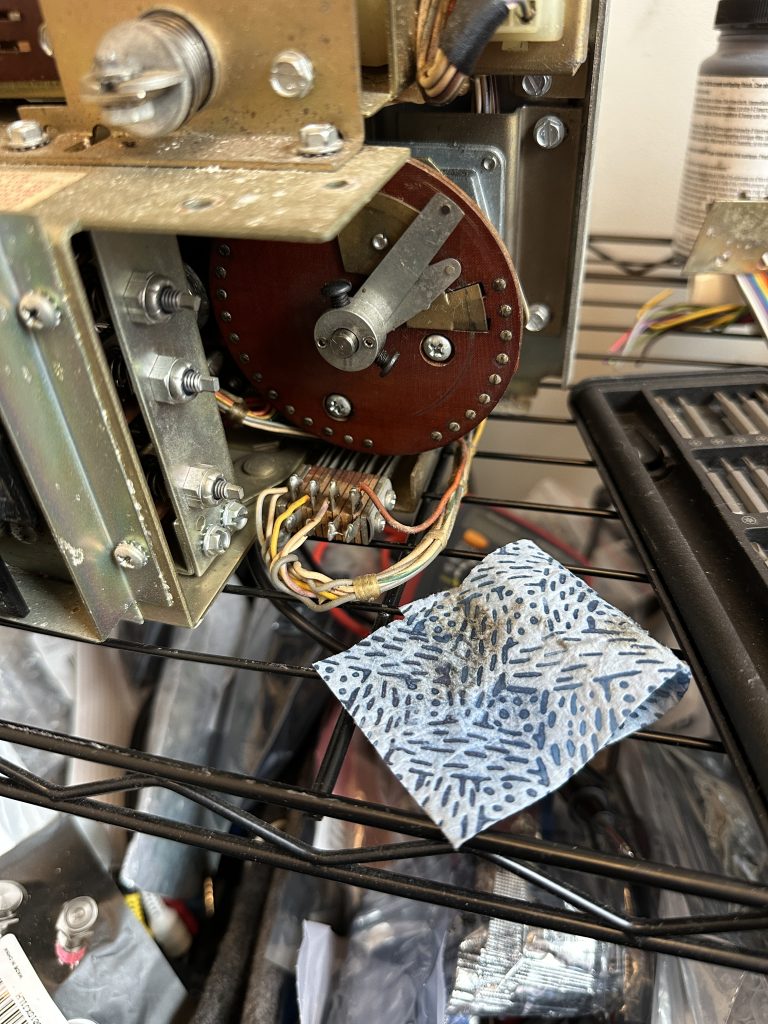
My implementation transplants a new brain into the wallbox in lieu of the big primary jukebox: a Raspberry Pi Zero 2. The Pi interprets the AC song selection pulses through a custom circuit with an opto-isolator (to manage all that pesky AC and its voltage spikes).
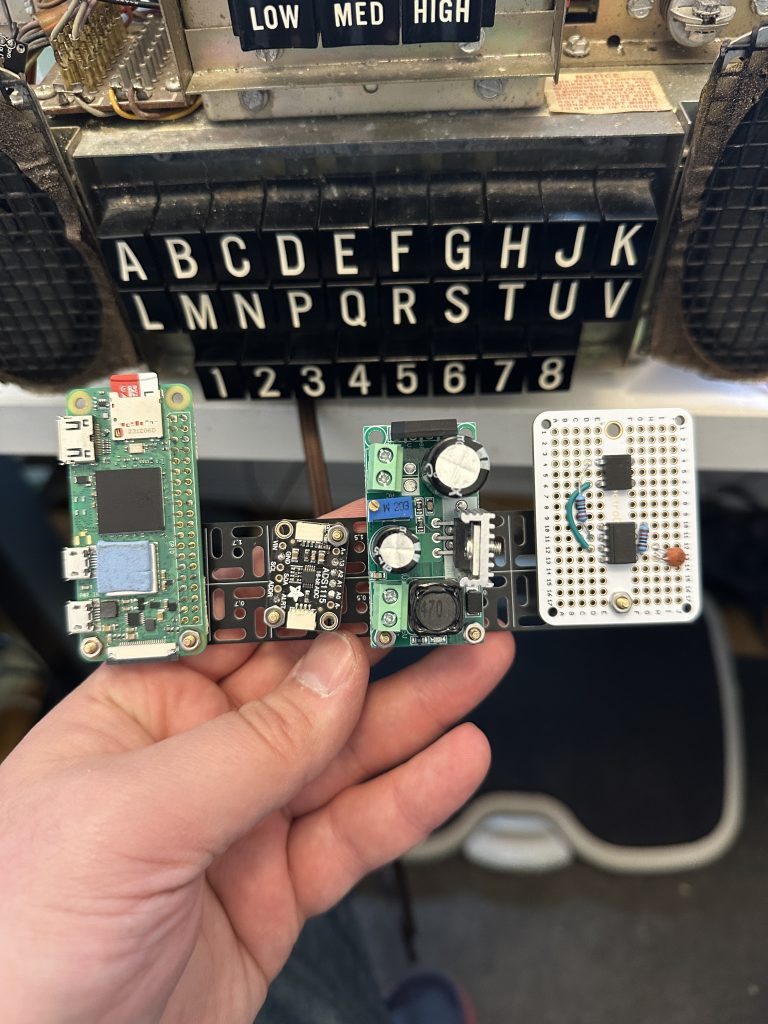
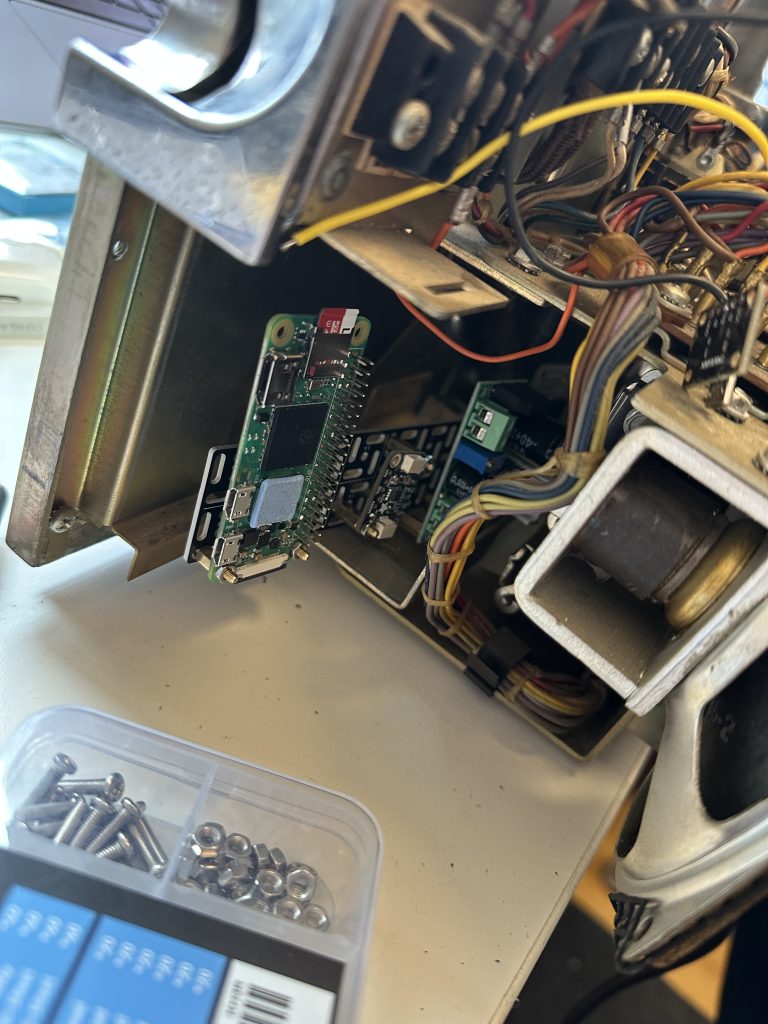
This has certainly been the trickiest and most error-prone part of the process for me, and to be honest I’m still troubleshooting it a bit. Credit for this circuit goes to Phil Lavin, but there are several people whose prior art, schematics and PCB gerbers have made my little project possible: Derek / H.E.C. Geek, smbaker, and s-petersen are three that come to mind, but many folks in the in the wallbox2mp3 forums offered a ton of context and support as well.
Many folks working on these jukeboxes seem to want something as close as possible to stock, which I greatly respect, but I took my project in a bit of a different direction.
For instance, I disconnected the speakers from the main jukebox wiring; instead, the speakers connect directly to the Adafruit Speaker Bonnet that’s mounted to the Pi. Also, I read the volume buttons through an ADS1115 ADC that reads voltage shifts. Most folks who’ve adapted the volume buttons seem to use the circuit as designed, to downshift the power to the speakers, but I like the idea of being able to use those buttons to control the Pi’s system volume.
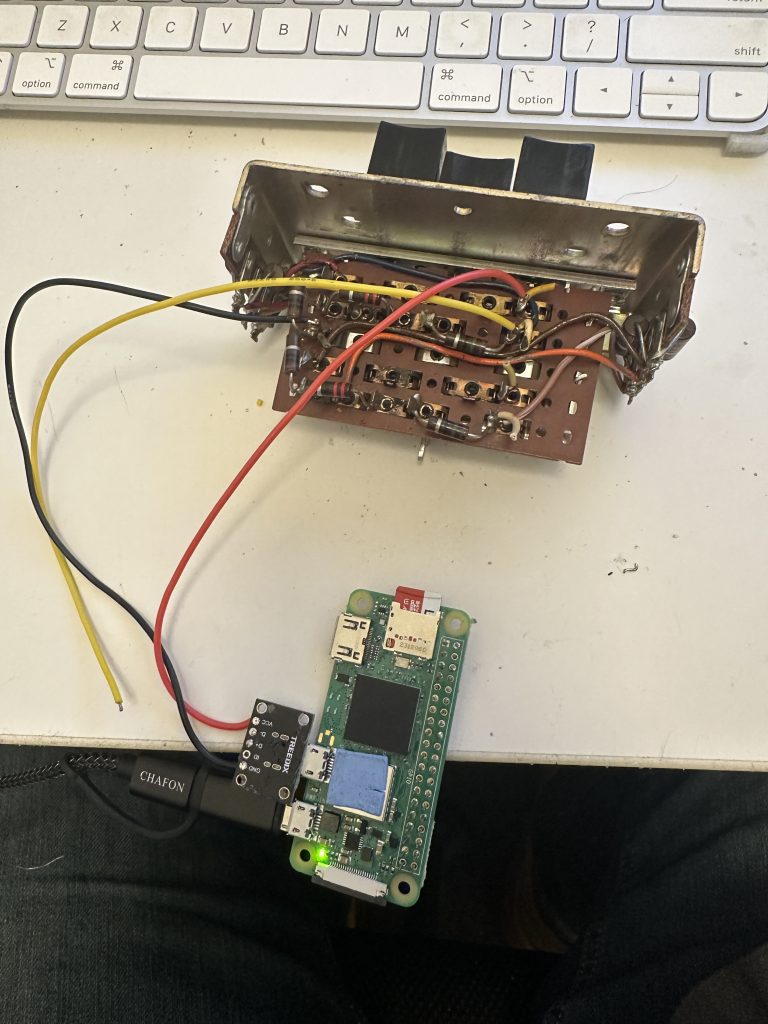
In the image above, I’m running 5v through the Seeburg’s volume buttons courtesy of a spare Pi, then checking the voltage of the resulting output. This ultimately gets read by the ADS1115 so we can change system volume via alsamixer when a volume button is pushed. (Figuring out this circuit would’ve been impossible without the guidance of Scudie and Sooner in this wallbox2mp3 forum thread.)
Even though I’ve tweaked a lot here, I’ve avoided too much customization. Partially this is because the wallbox works and I don’t really like making big irreversible changes to functional vintage tech. But also, it’s a mess of wires and solenoids that I barely understand. The service manual is filled with all sorts of comical 1960s jargon like “detent pawls” and whatnot. I’m not an electrical engineer, and I’m certainly not an electrical engineer from the 1960s, so I’m limited to whatever I can suss out without destroying the thing.
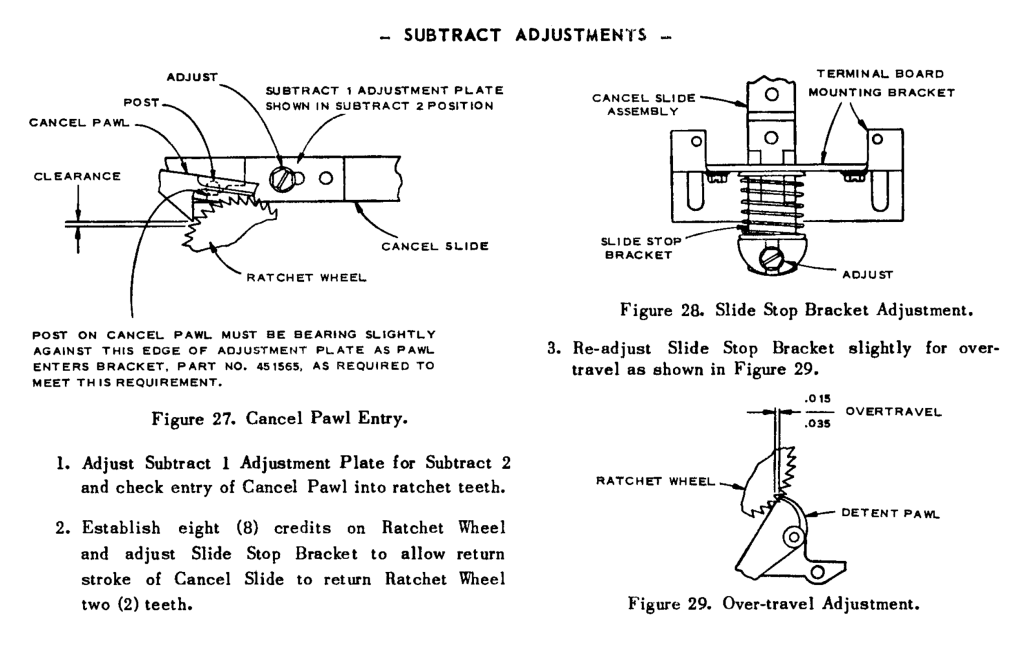
Free play is accomplished by bridging pins 1 and 7 on the main 12-pin connector that attaches the main components of the SC1 to the APU, the unit tucked inside it that keeps track of coins and credits. (Thanks to this wallbox2mp3 post for the tip.) Supposedly this can burn out the solenoid and potentially present a minor fire risk, so if I get to a point where I plan to keep this thing turned on for long periods, I’ll probably try to rewire it per this YouTube video. The 12v AC lamps can be swapped with these LED alternatives, though I had to trim the legs and add some solder globs to them to get them to fit in the mounts better. I did switch some of the lamps in the front of the box to 8mm thru-hole Neopixels, though. I mean, why not have the jukebox glow in accordance with my emotions?
So.
Am I healed?
I think we all know the answer. The journey grinds on. I’ve been 40 for a week now, and the clouds haven’t quite parted.
Fortunately, everyone in my life who’s over the age of 40 has nothing but wonderful things to say about this particular decade. It’s been a bit of a balm for me. If you, too, are facing down this milestone, maybe the perspective of some genX friends or family will help you as much as it is starting to help me.
Plus, if all goes according to plan, in just two short years I’ll turn 42.
* I do want to end with a quick note about consent, since I mentioned above that this project includes some surreptitious audio memos. I could lean hard on nostalgia and hoarding and even my own ADHD and auditory processing issues to explain this, but it's not a great look. Very few of these recordings were made in such a manner; mostly this is limited to certain interactions with my parents. Often this has looked like me whipping out my phone at various moments during family gatherings when I can tell that they’re about to launch into a spiel about some little nugget of family history that will one day be completely inaccessible. In a couple of cases, I've also recorded challenging work conversations (e.g. getting laid off). New York is a single-party consent state, but nobody should feel like they’re walking into Nixon’s office every time they interact with me. Feel free to ask me if I’m taping you in the future. I’m certainly not, unless you’re telling me a story about my ancestors or you're about to fire me or we’re having a brutal fight and I can tell that I’m going to forget it because that’s my trauma response.
